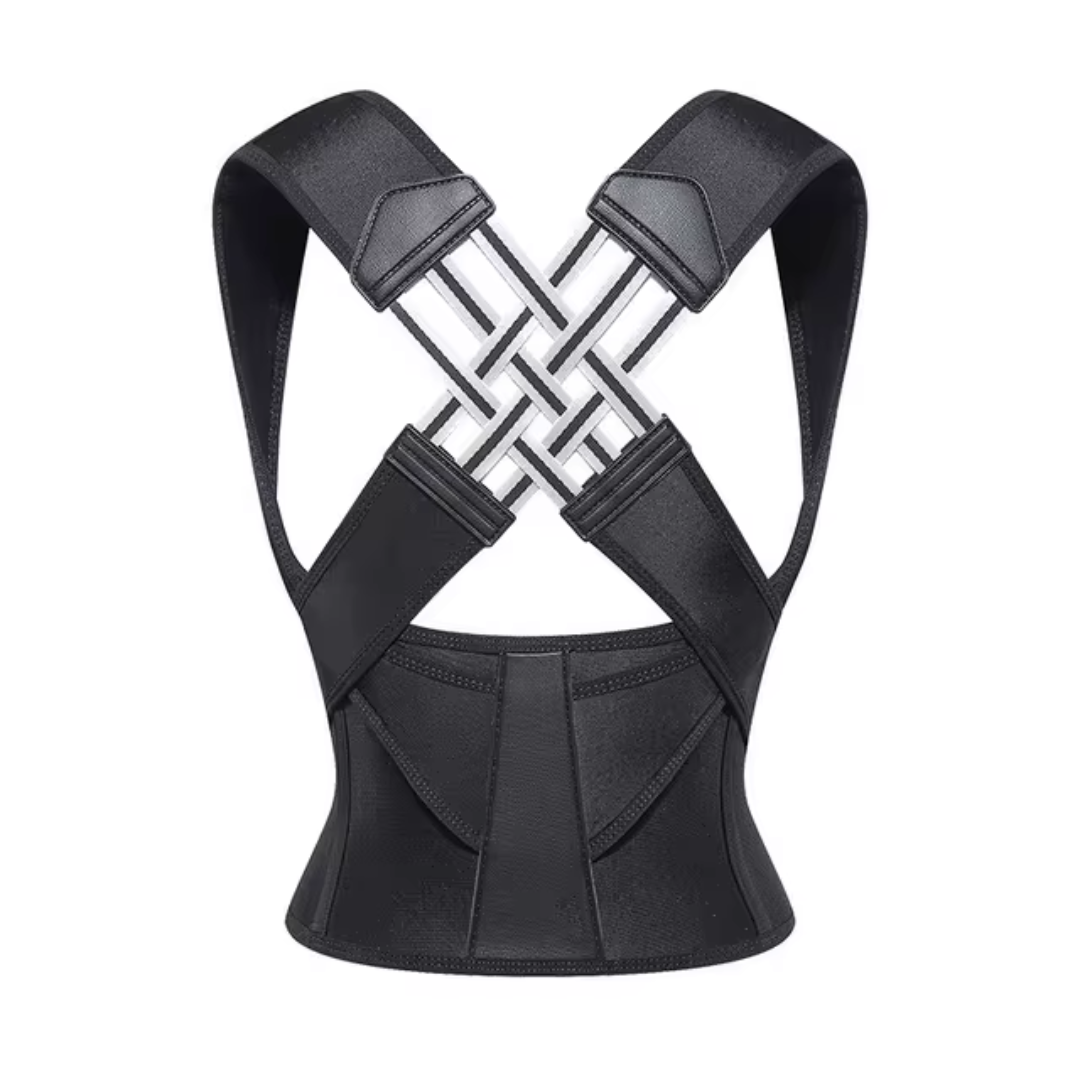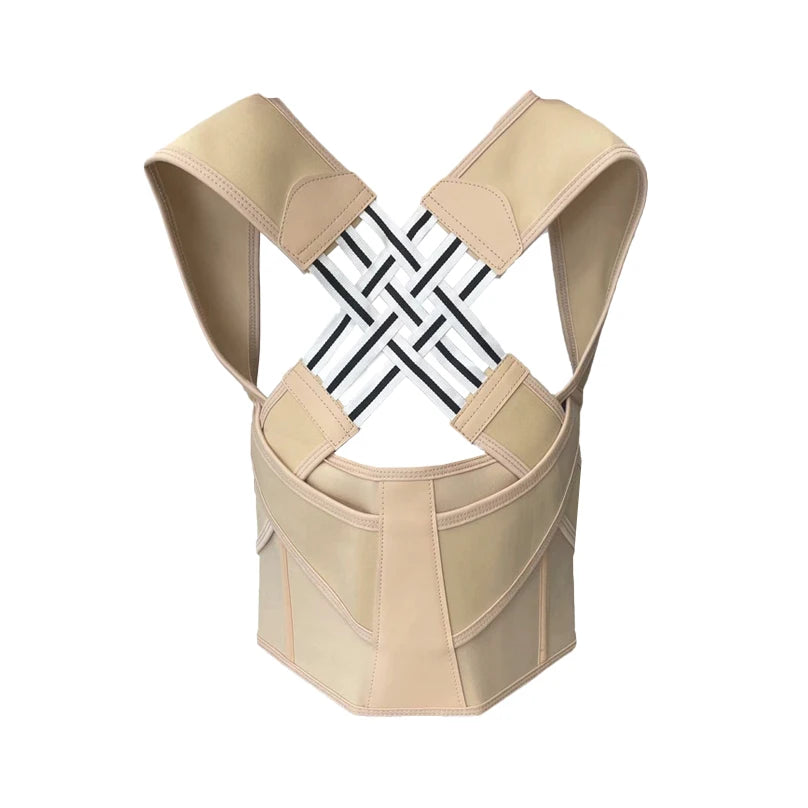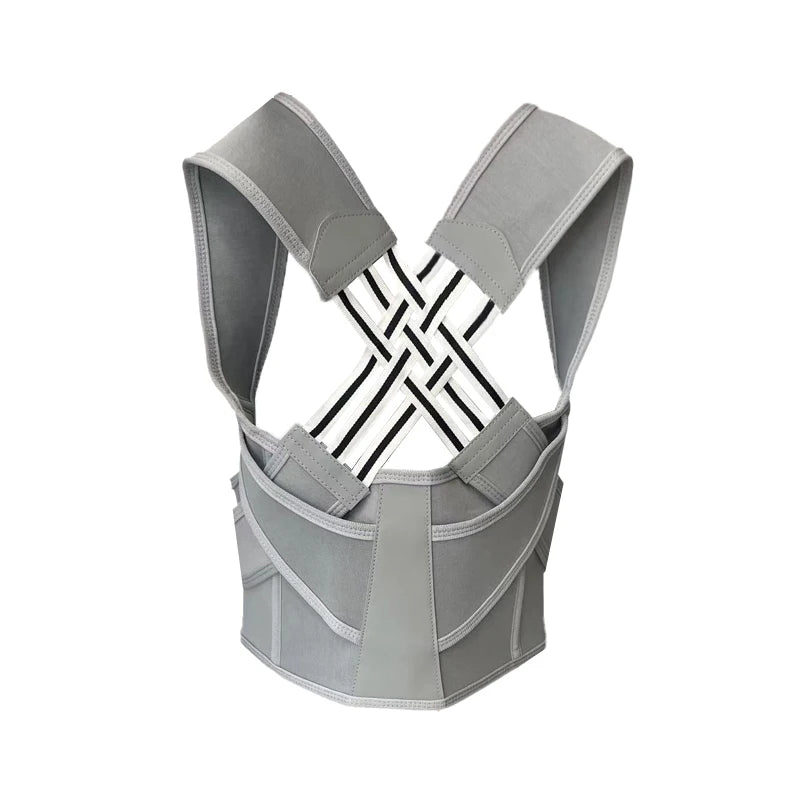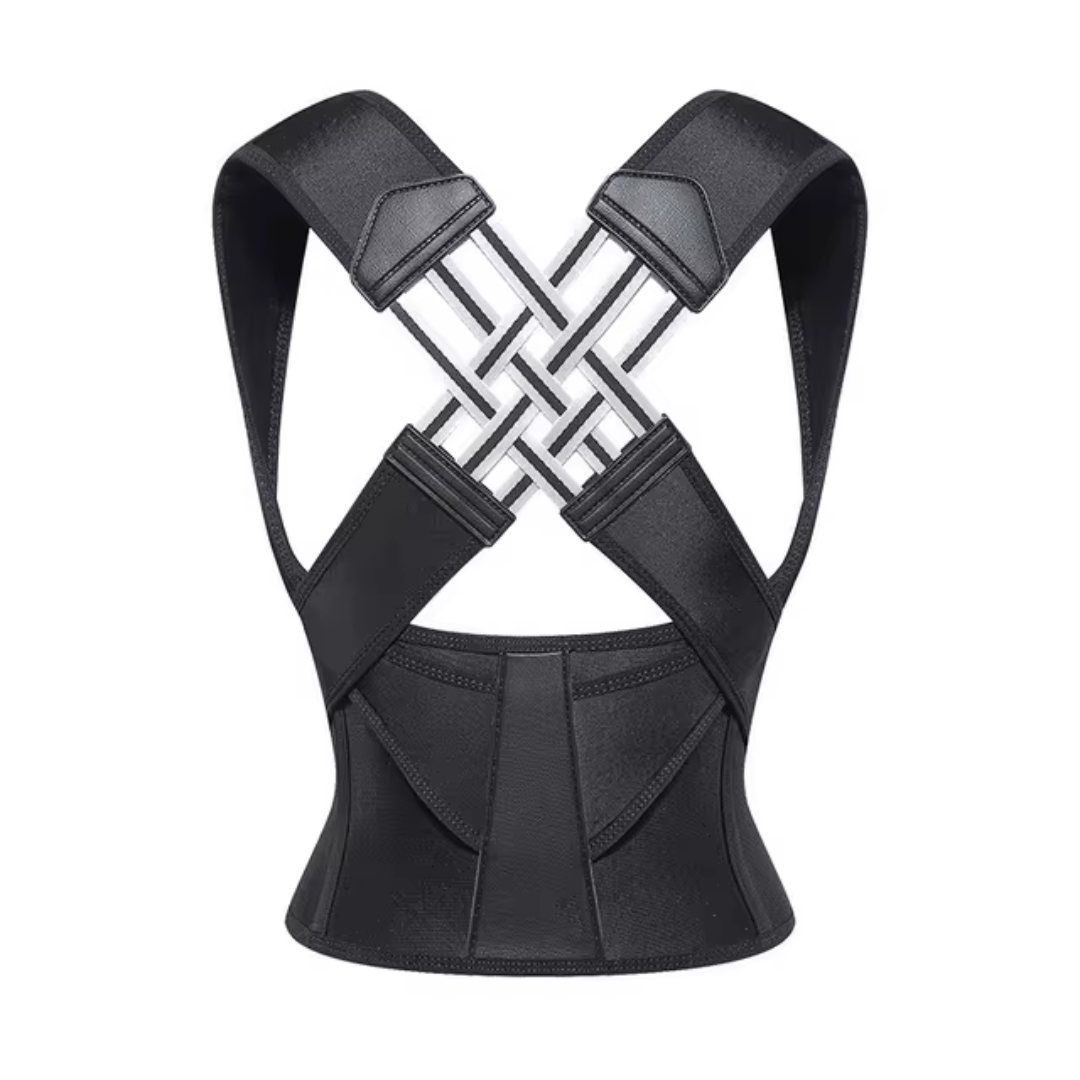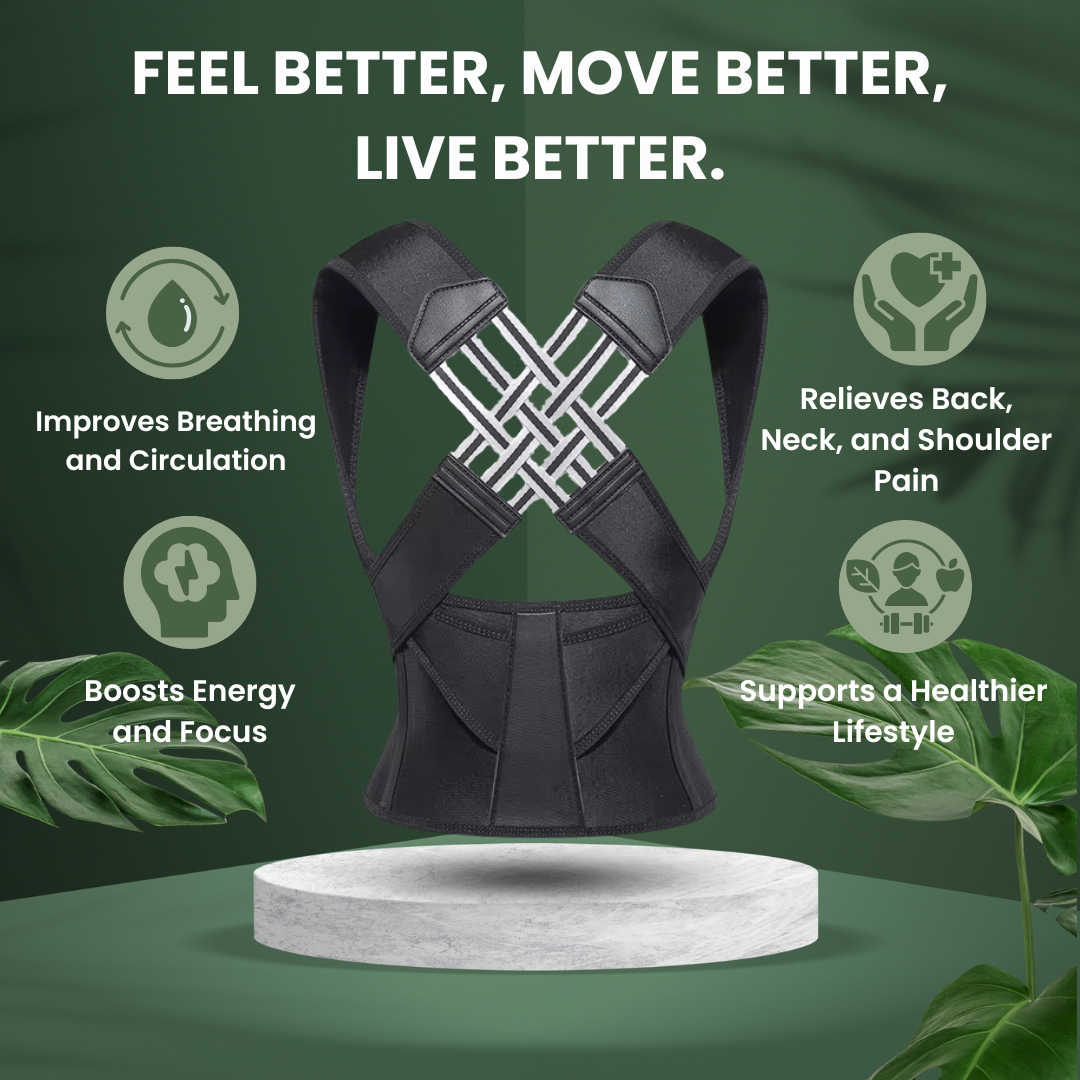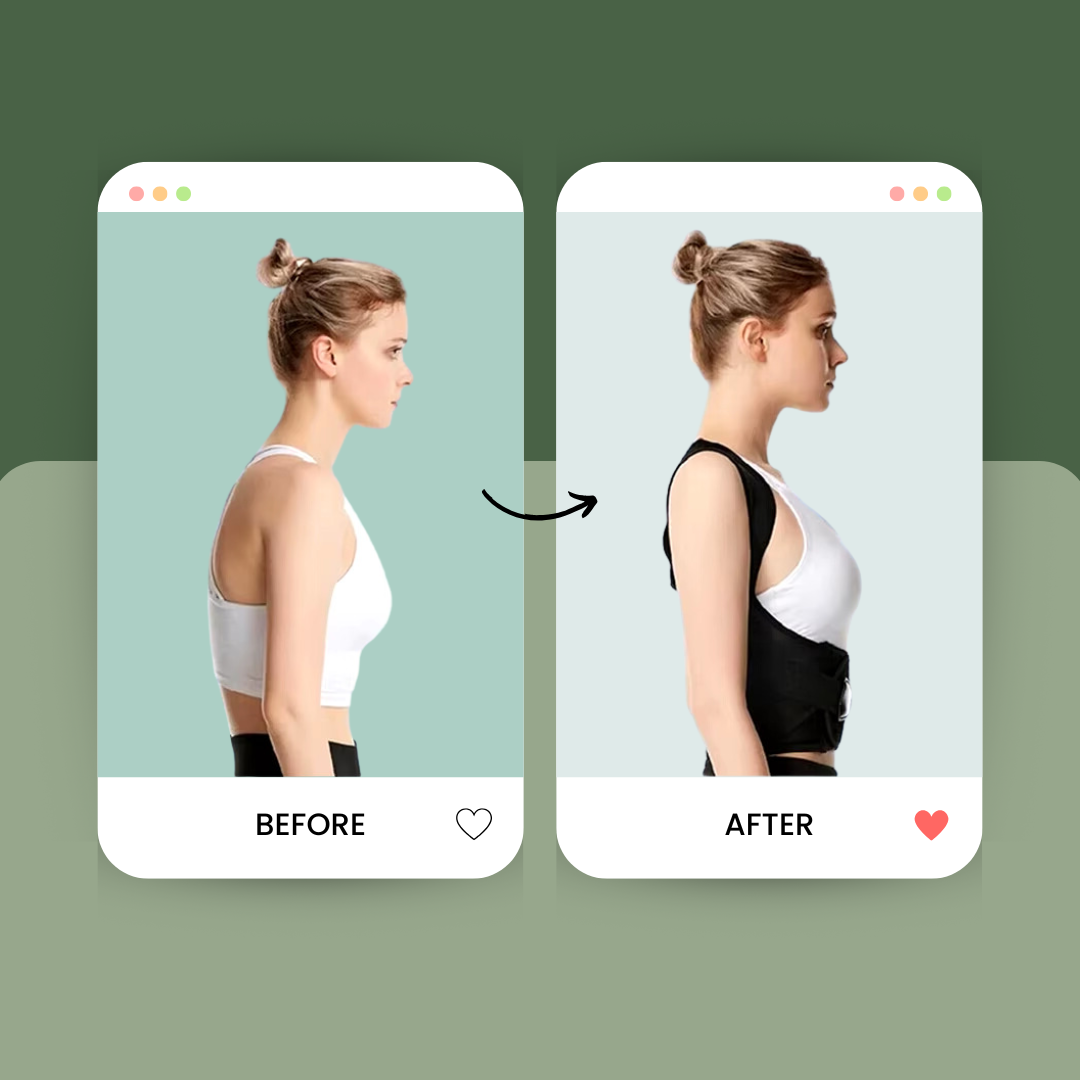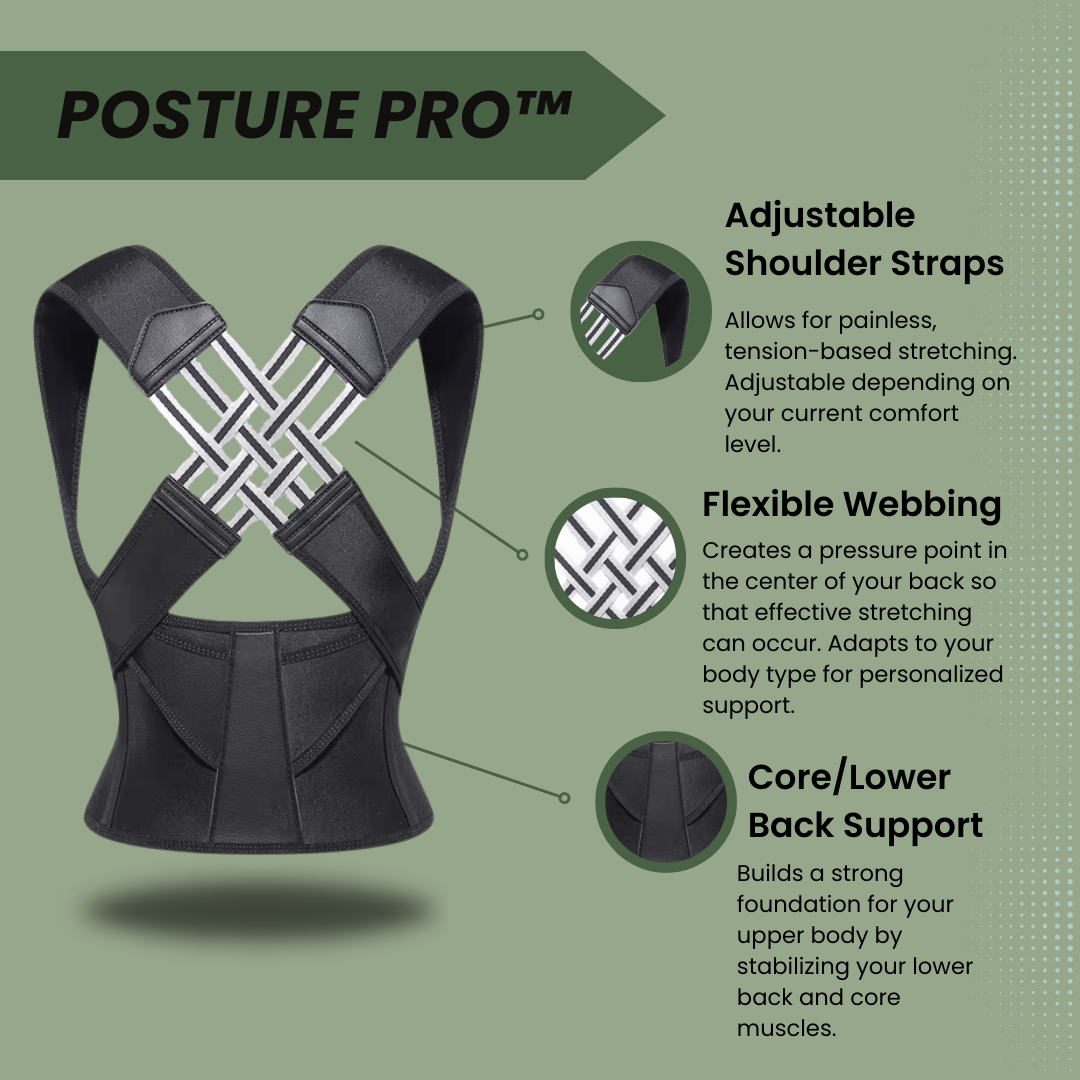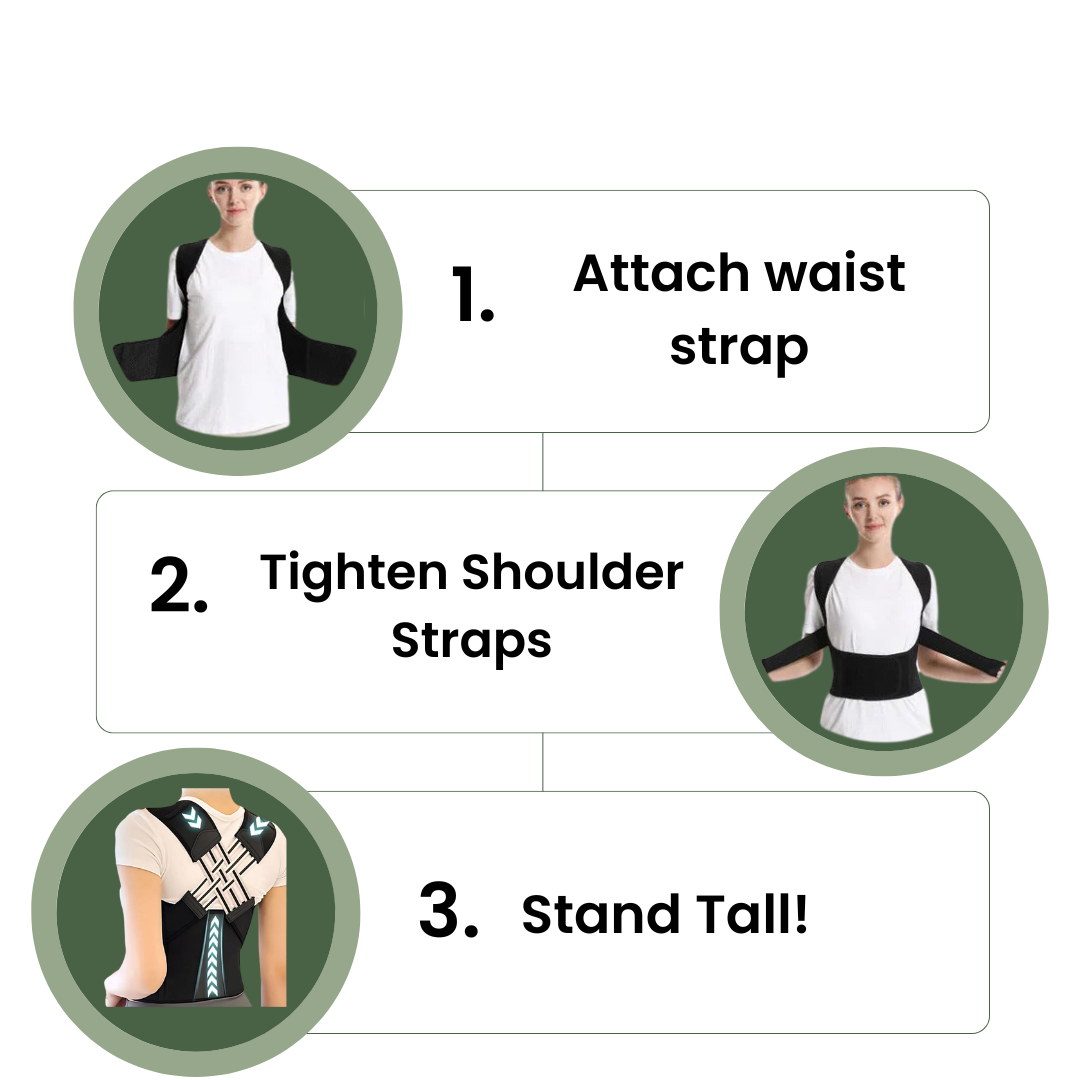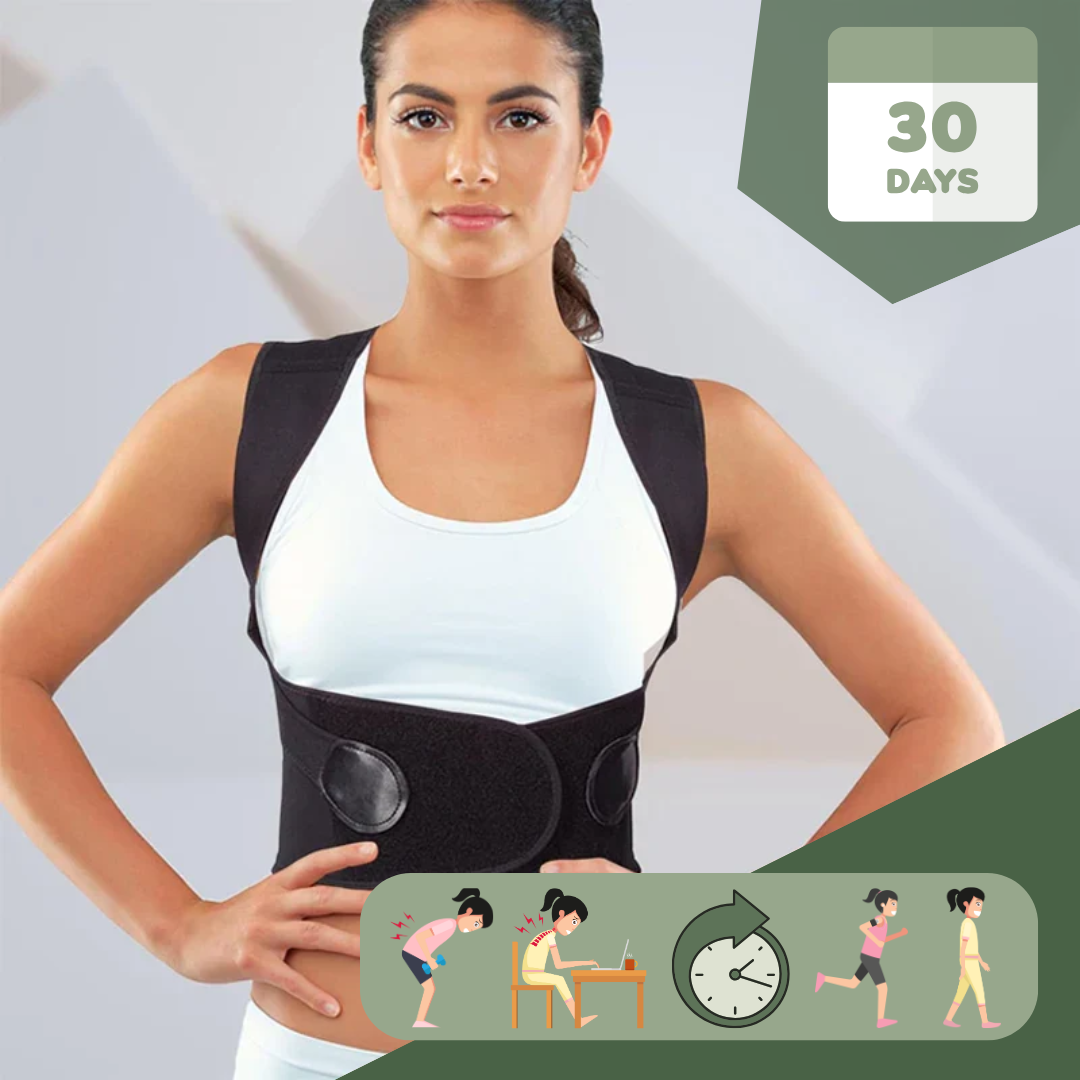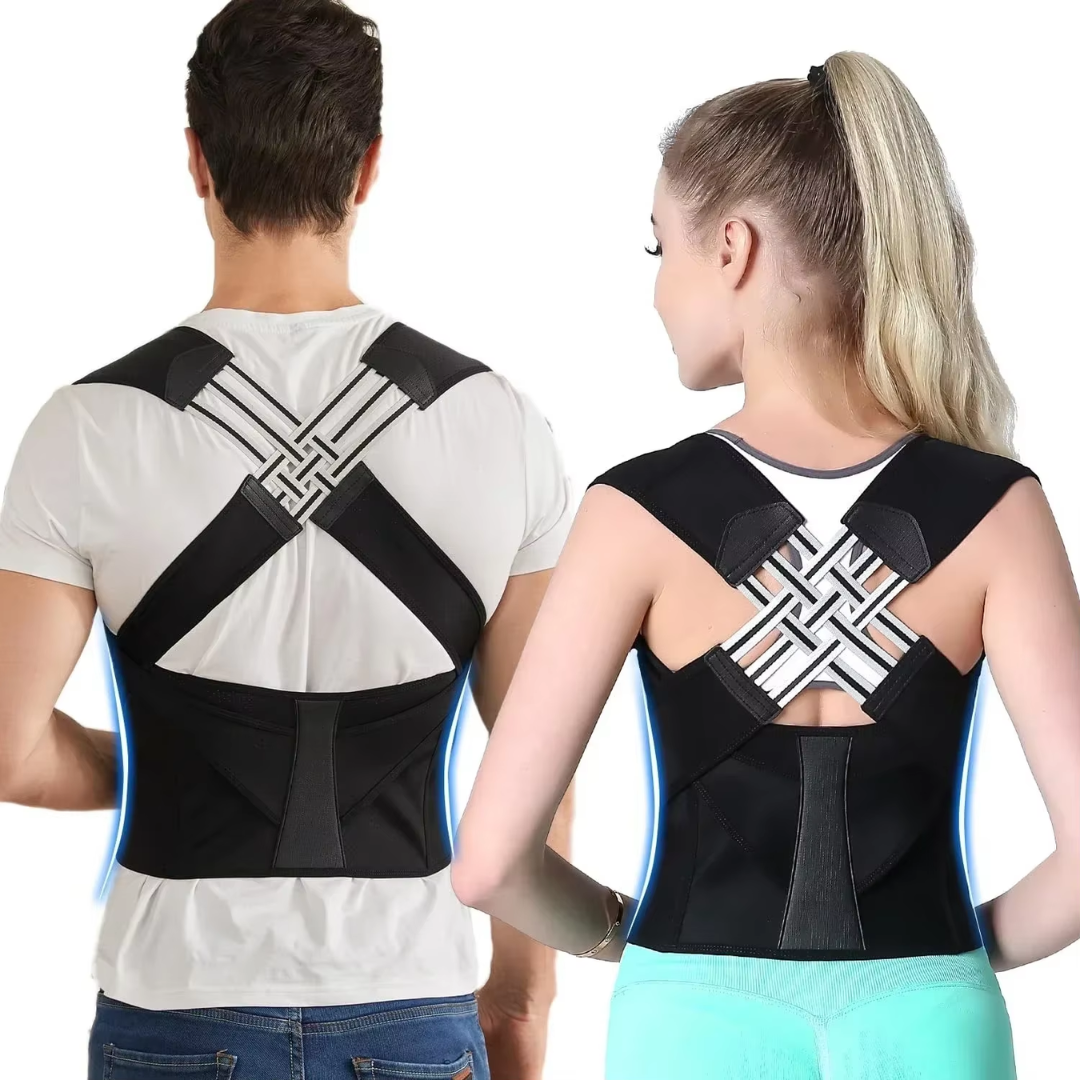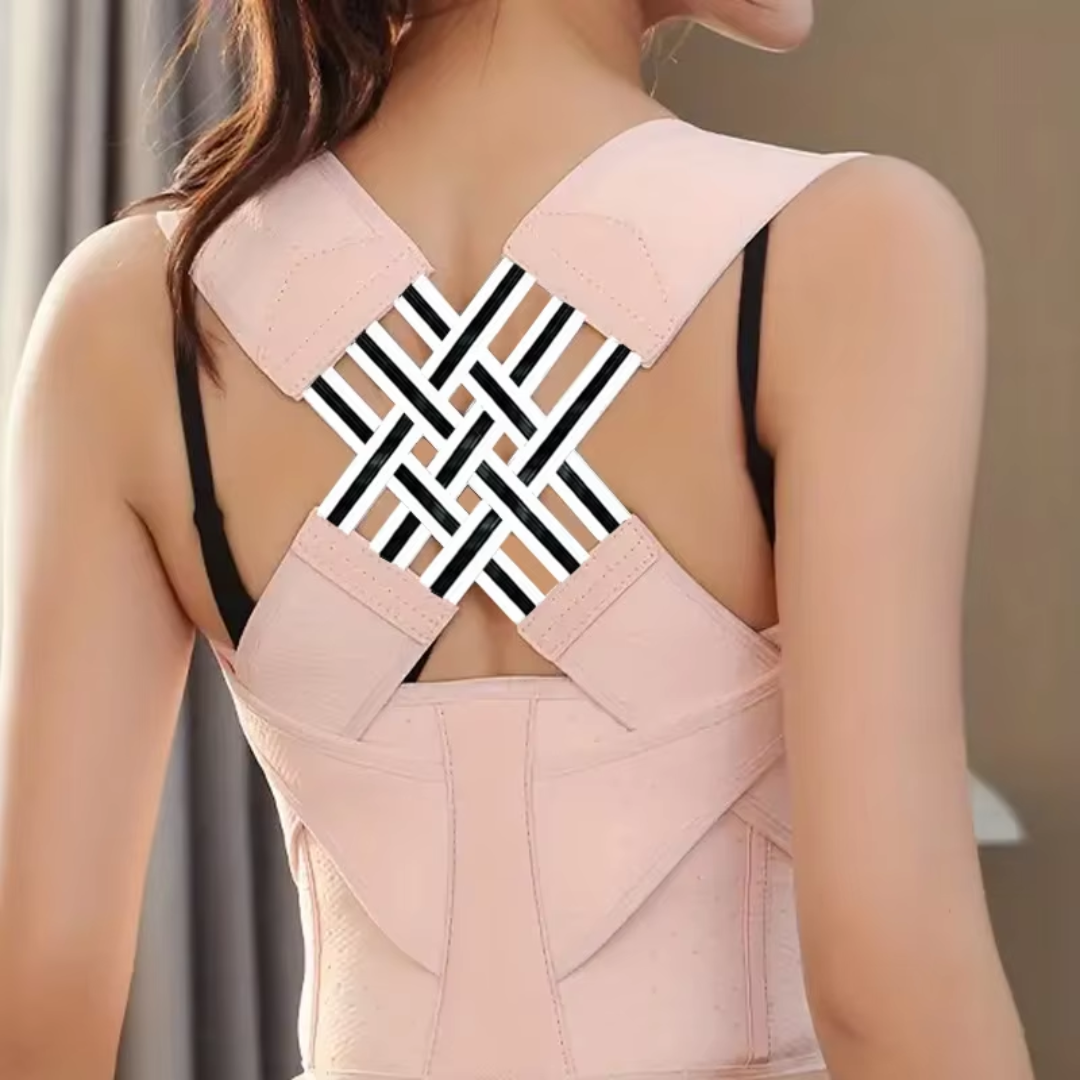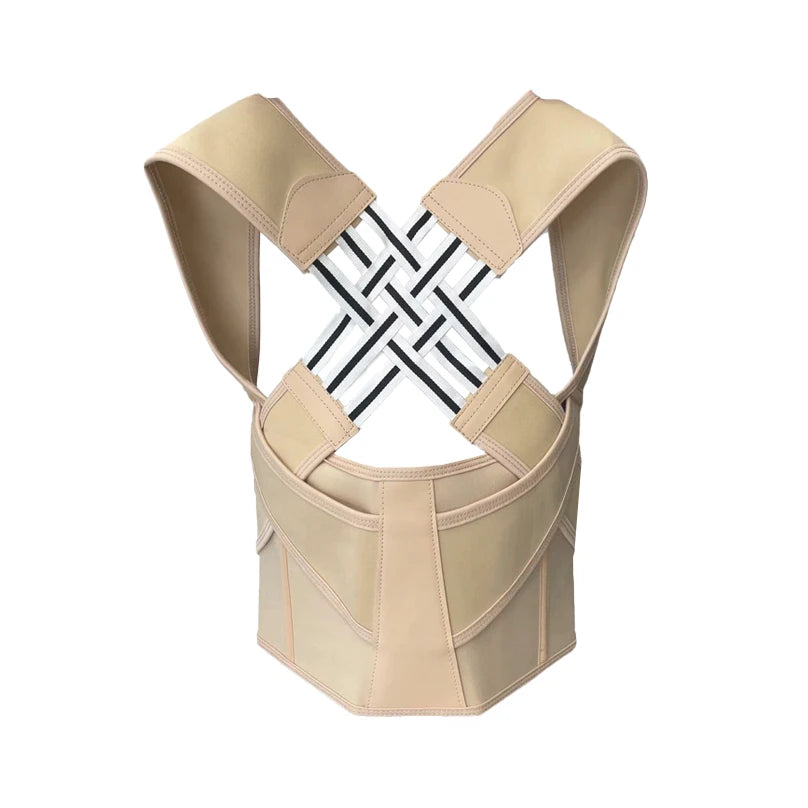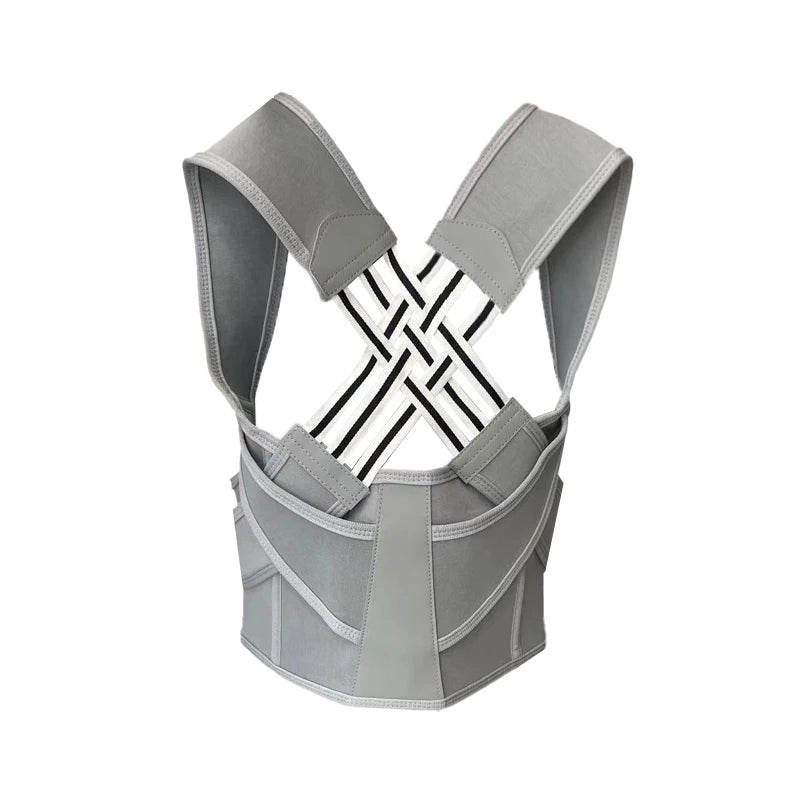Many people worry about their posture as they get older. A fact worth mentioning is that posture correctors can help fix this issue. This article will guide you on choosing the right posture corrector for seniors, kids, and everyone in between.
Keep reading to find out how.
Key Takeaways
- Good posture is important for all ages. It helps to keep the body balanced and reduces wear on joints and muscles.
- Kids, adults, and seniors face different posture challenges. These include growth spurts in children, sedentary lifestyles in adults, and age-related decline in seniors.
- Posture correctors can help improve how people sit, stand, and move. There are special tools like ergonomic backpacks for kids and adjustable braces for adults.
- Doing exercises that strengthen the core can also help with posture. This is true for everyone from kids to seniors.
- Choosing the right posture corrector depends on comfort, fit, and specific needs. Always pick one that feels good to wear and helps your body stay aligned right.
Importance of Good Posture Across All Ages
Good posture is key for everyone, no matter how old they are. It helps spread gravity's force evenly across joints and muscles. This means less wear and tear on the body. With a straight back while sitting or walking, weight stays balanced over the feet.
Good habits like these keep organs working right and prevent back pain.
Poor posture leads to uneven damage with long-term effects. - Christina Markar, DC
Posture correctors can help train muscles to hold the body right by putting the right kind of pressure where it's needed, says Rishabh Nanavati, MD. Starting young with good habits is best.
But it's never too late to improve posture and health. Everyone can benefit from paying attention to how they sit, stand, and move every day.
Posture Challenges by Age Group
Children and teens face posture challenges as they develop postural habits, adults experience difficulties due to sedentary lifestyles, and seniors manage age-related postural decline.
Each age group encounters distinct challenges in maintaining good posture.
Children and Teens: Developing Postural Habits
Kids grow fast. Their bodies change and so do their posture needs. A study showed that with each year, a child's body makes slight shifts in the head, shoulders, pelvis, and knees positions.
These changes can lead to issues if not checked early on. For kids aged 11 to 12, there was a notable shift in knee position due to growth spurts.
Long hours sitting and using furniture that doesn't fit well are problems for young ones at school. This mismatch can cause back and neck pain over time. Catching posture problems early helps stop future pain.
Adults: Combating Sedentary Lifestyles
Adults face a big challenge with sitting too much. This way of life can hurt their minds and bodies, leading to feeling down or not being able to move well. To fight this, proper workplace setup is key.
They need to adjust their chair height and how close things are on their desk so everything lines up right. Making these changes can cut back on the discomfort from staying in one place too long.
Frequent breaks and moving around are vital for health.
Also, using items like adjustable posture correctors can help adults keep a good spine position while they work. These tools come with straps you can change to fit better and provide support where it's needed most.
By taking steps to move more and fix their seating area, adults can improve how they feel every day.
Seniors: Managing Age-Related Postural Decline
As we age, we experience a decline in postural stability. This can lead to an increased risk of falls and injuries for seniors. Research shows that older adults exhibit increased postural sway, longer movement times during actual movements, and age-related postural oscillations which worsen postural balance.
Cognitive load from dual-tasking can also influence their ability to control posture.
To manage age-related postural decline, seniors can engage in exercises aimed at improving flexibility and strength. Lightweight and comfortable posture braces could also be beneficial for them.
These solutions aim to address the deficits in inhibitory processes that impact both postural stability and cognitive-motor coordination in seniors.
Posture Solutions for Children and Teens
Ergonomic Backpacks
Ergonomic backpacks are designed to support your back and posture. Adjustable, padded straps help distribute weight evenly, reducing strain on the shoulders and back. These backpacks also feature breathable materials and padded back panels for comfort and ventilation.
With different compartments, they help organize weight distribution, promoting better posture and preventing discomfort. Ergonomic backpacks merge style with health-focused elements to enhance comfort while supporting good posture.
Posture Training Exercises
Good posture exercises are essential for all age groups, as they aid in developing key muscles and help in preventing pain and injuries caused by poor posture habits. Here are some straightforward yet effective exercises for posture training, focusing on muscle activation and strength:
- Bridges: This exercise targets the glutes and lower back muscles, which are crucial for maintaining a strong and supportive core.
- Reverse Abdominals: These exercises concentrate on the abdominal muscles using a lift and lower technique to enhance core stability.
- Superman Exercise: This exercise helps strengthen both upper and lower back muscles, along with the glutes and hamstrings.
- Downward-Facing Dog Yoga Pose: Enhance core, hip, and shoulder strength with this yoga pose, which also aids in spinal alignment.
- Animal Walks: Include bear and crab walks in your routine, as they effectively strengthen core muscles while engaging proprioceptive senses.
These exercises can be adjusted to accommodate different fitness levels across various age groups.
Posture Solutions for Adults
Improve your posture at work with ergonomic furniture and adjustable devices. Find the right solution for your age group to prevent back and neck pain, enhance comfort, and boost productivity.
Workplace Ergonomics
Workplace ergonomics is vital for enhancing comfort and minimizing discomfort. Prolonged sitting can lead to common health issues such as neck pain, back pain, wrist soreness, and shoulder discomfort.
It's crucial to adjust chair height, equipment spacing, and desk posture for optimal alignment. This involves positioning the keyboard and mouse to maintain straight wrists and keep arms close to the body.
Moreover, monitor placement should be at an arm's length away, with the top aligning with or just below eye level. OSHA offers guidance on ergonomic practices.
By incorporating workplace ergonomic principles, it not only reduces physical strain but also improves productivity by creating a work environment that supports employees' well-being.
Adjustable Posture Correctors
Adjustable posture correctors are vital for individuals of various ages to enhance their posture and alleviate back discomfort. Take, for example, the Posture Pro™, tailored for a variety of different heights and weights, ensuring a snug fit for most grown-ups.
Users should gradually increase the duration of wear from 5-10 minutes to 1-2 hours, contributing to better muscle activation and spine alignment.
These posture correctors are crafted with top-quality, breathable materials to guarantee comfort even during prolonged use. This lightweight solution weighs a mere 4.66 ounces and measures slightly over six inches in length.
By integrating adjustable posture correctors into everyday routines, individuals can attain improved spinal orthosis and stave off age-related postural decline at all life stages.
Posture Solutions for Seniors

Seniors can benefit from posture solutions designed for their needs, including lightweight and comfortable posture braces and specialized exercises for flexibility and strength.
Interested in learning more about improving postural health for seniors?
Lightweight and Comfortable Posture Braces
Posture braces are crafted to gently draw the shoulders back, aiding in the retraining of muscles for improved posture. Seniors and those with mobility challenges are particularly concerned with comfort and ease of use.
Optimal models weigh a mere 4.66 ounces and incorporate breathable materials, thereby improving usability for seniors.
Moreover, successful utilization requires a gradual increase in wear time from 15 to 20 minutes, gradually extending to an hour each day.
Exercises for Flexibility and Strength
To improve flexibility and strength, try simple exercises to alleviate pain from sitting for long periods. Here are some options:
- Wall Posture Exercise helps maintain proper alignment.
- Light weight lifting supports strength maintenance and proper posture.
- Yoga and Pilates enhance flexibility and strength.
Benefits of Using Posture Correctors
Using posture correctors can relieve pain and improve comfort while preventing postural issues over time. To learn more about the advantages of using them, read our full blog post on posture solutions for different ages.
Pain Relief and Improved Comfort
Wearing posture correctors can help relieve pain and improve comfort by activating muscles. This is especially important because prolonged poor posture during the pandemic has led to increased neck, back, and shoulder pain.
Correctors also enhance proprioception, which helps users maintain better awareness of their posture. However, it's recommended to use them for only a few hours each day to avoid dependency.
It's also beneficial to integrate their use with strengthening exercises as this helps in improving alignment.
The joints become accustomed over time while using these devices and the muscles learn to fire in the correct position, thus providing relief from discomfort due to poor posture.
Prevention of Postural Issues Over Time
Using posture correctors regularly is crucial in preventing chronic postural issues, as it helps address imbalances created by prolonged poor positioning and activates underused muscles for increased body awareness.
It's vital to remember that while these devices provide valuable support, their effectiveness relies on proper use and should be used alongside targeted exercises aimed at strengthening the muscles supporting good posture.
Limiting the duration of wear can also prevent reliance on the devices and encourage users to transition towards independent methods of maintaining healthy posture in the long run.
Tips for Choosing the Right Posture Corrector for Any Age
- Consider the fit, comfort, and adjustability of the posture corrector.
- Check for irritation or discomfort caused by the corrector
- Consult a healthcare provider for any severe misalignment issues.
Conclusion
In conclusion, maintaining good posture is crucial at every stage of life. Children and teens can benefit from ergonomic backpacks and posture training exercises to develop healthy habits.
Adults facing sedentary lifestyles can improve their posture with workplace ergonomics and adjustable posture correctors. Seniors dealing with age-related postural decline can find relief through lightweight braces and flexibility exercises.
By addressing these unique needs across different ages, individuals can experience the benefits of improved spine alignment, reduced back and neck pain, and overall enhanced comfort in daily activities.
FAQs
1. What are posture solutions for different ages?
Posture solutions for different ages include the use of a posture corrector, back brace or an upright go device. These help in maintaining good posture and reducing back and neck pain.
2. How does a posture corrector work?
A posture corrector works by using adjustable straps that fit around your shoulders and waist to keep your spine aligned, activating muscles required for maintaining good posture.
3. Are there any special features I should look for in a back brace?
Yes! Look out for braces with adjustable design, breathable materials, shoulder straps that can be slipped on easily - these features enhance comfort while facilitating effective muscle activation and spine alignment.
4. Can bad posture be improved over time?
Absolutely! With consistent usage of devices like a back brace or upright go along with conscious efforts towards better body positioning, you'll notice significant improvements in your bad posture over time.
5. Are these products comfortable to wear throughout the day?
Most certainly! Thanks to their adjustable straps and breathable material used in their construction; whether they're vests or braces - they ensure maximum comfort while promoting good spinal health.


